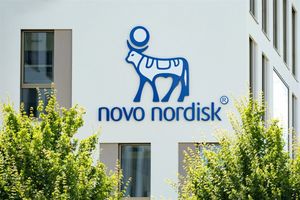
Dialysis provider DaVita Inc. (NYSE: DVA) met Wall Streets revenue expectations in Q3 CY2025, with sales up 4.8% year on year to $3.42 billion. Its non-GAAP profit of $2.51 per share was 20.9% below analysts’ consensus estimates.
Is now the time to buy DaVita? Find out by accessing our full research report, it’s free for active Edge members.
DaVita (DVA) Q3 CY2025 Highlights:
- Revenue: $3.42 billion vs analyst estimates of $3.43 billion (4.8% year-on-year growth, in line)
- Adjusted EPS: $2.51 vs analyst expectations of $3.17 (20.9% miss)
- Adjusted EBITDA: $722.2 million vs analyst estimates of $750.6 million (21.1% margin, 3.8% miss)
- Management reiterated its full-year Adjusted EPS guidance of $10.75 at the midpoint
- Operating Margin: 14.8%, down from 16.4% in the same quarter last year
- Free Cash Flow Margin: 17.7%, down from 20.6% in the same quarter last year
- Sales Volumes fell 1.5% year on year (0.6% in the same quarter last year)
- Market Capitalization: $9.27 billion
Company Overview
With over 2,600 dialysis centers across the United States and a presence in 13 countries, DaVita (NYSE: DVA) operates a network of dialysis centers providing treatment and care for patients with chronic kidney disease and end-stage kidney disease.
Revenue Growth
A company’s long-term sales performance is one signal of its overall quality. Any business can put up a good quarter or two, but the best consistently grow over the long haul. Regrettably, DaVita’s sales grew at a tepid 2.9% compounded annual growth rate over the last five years. This fell short of our benchmarks and is a poor baseline for our analysis.
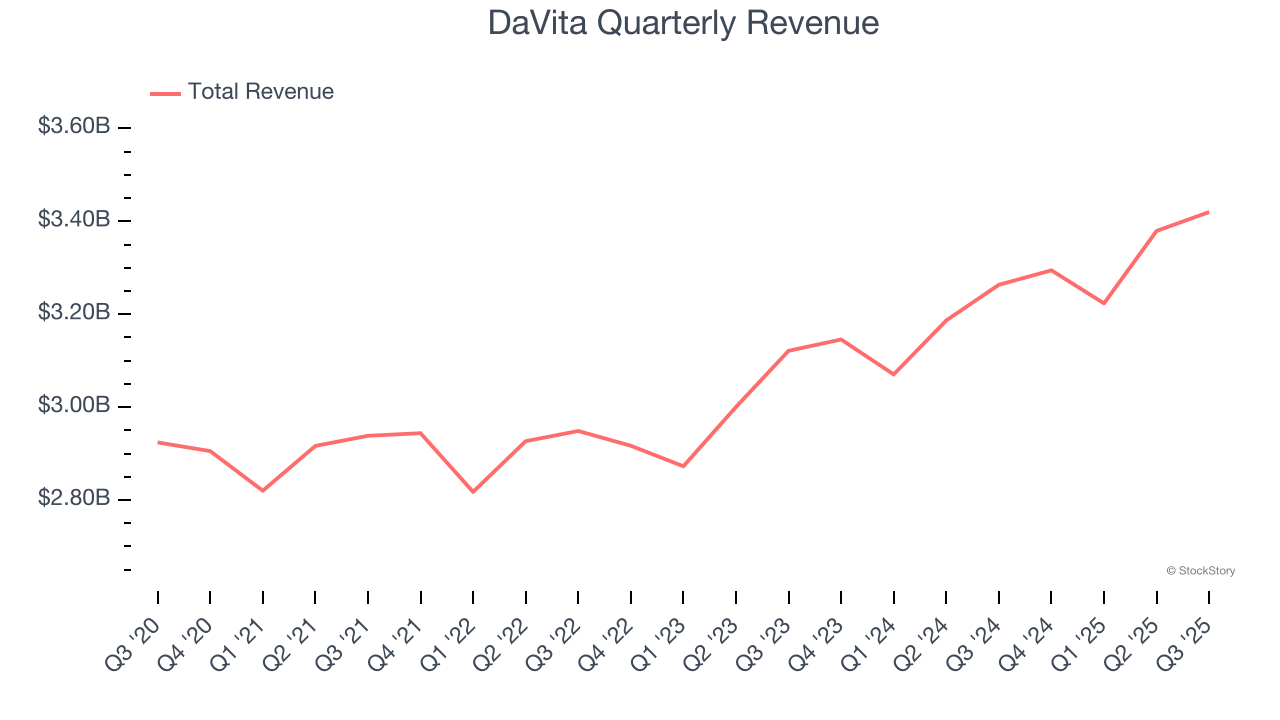
We at StockStory place the most emphasis on long-term growth, but within healthcare, a half-decade historical view may miss recent innovations or disruptive industry trends. DaVita’s annualized revenue growth of 5.7% over the last two years is above its five-year trend, but we were still disappointed by the results. 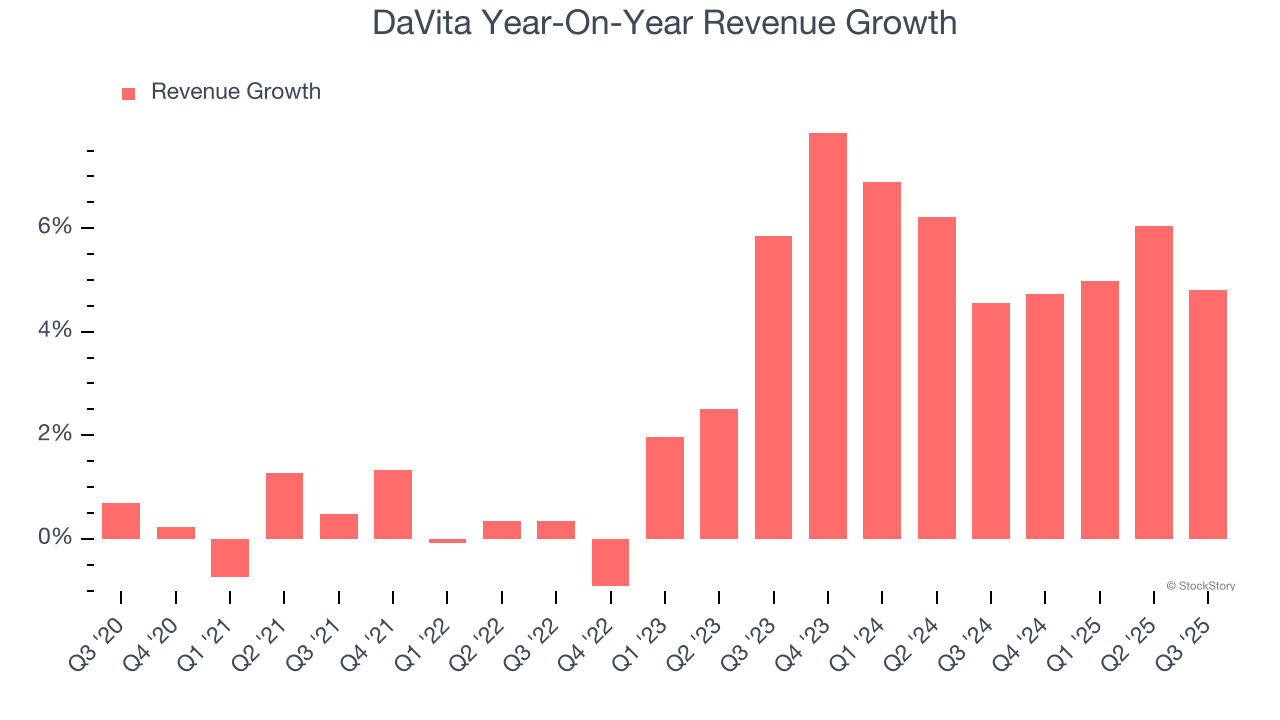
DaVita also reports its number of treatments, which reached 7.24 million in the latest quarter. Over the last two years, DaVita’s treatments were flat. Because this number is lower than its revenue growth, we can see the company benefited from price increases. 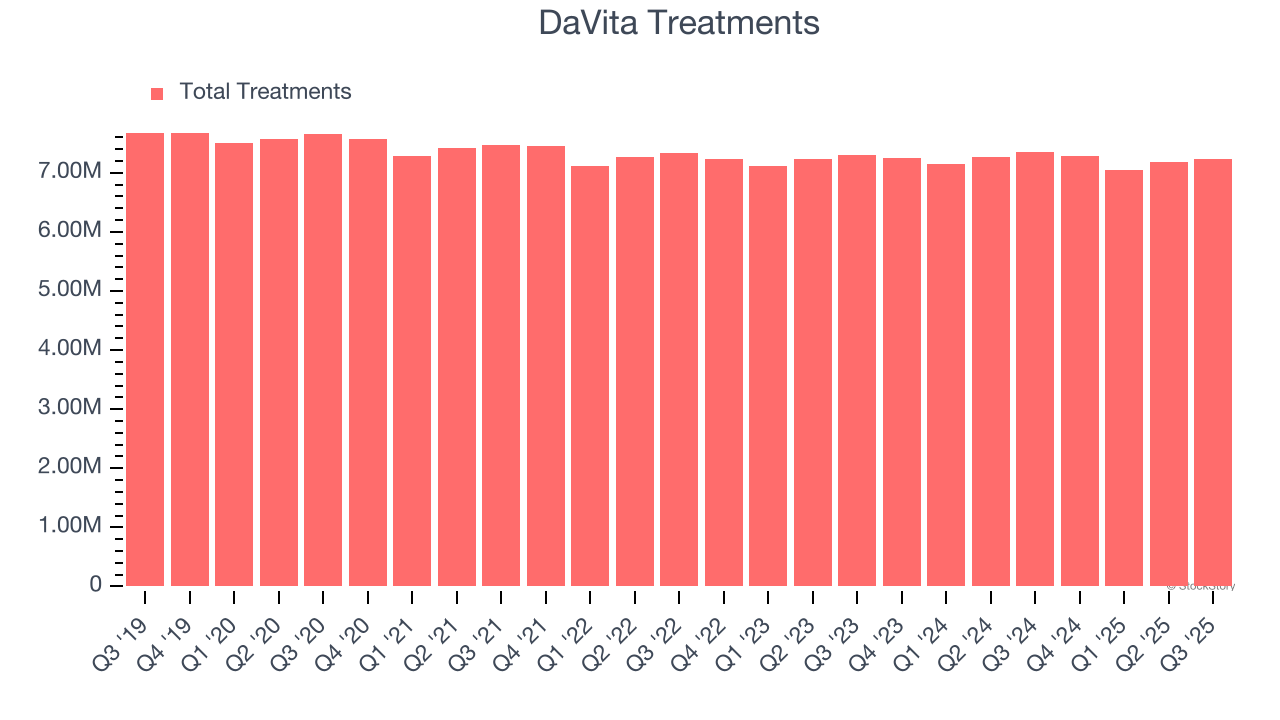
This quarter, DaVita grew its revenue by 4.8% year on year, and its $3.42 billion of revenue was in line with Wall Street’s estimates.
Looking ahead, sell-side analysts expect revenue to grow 3.1% over the next 12 months, a slight deceleration versus the last two years. This projection doesn't excite us and suggests its products and services will see some demand headwinds.
Software is eating the world and there is virtually no industry left that has been untouched by it. That drives increasing demand for tools helping software developers do their jobs, whether it be monitoring critical cloud infrastructure, integrating audio and video functionality, or ensuring smooth content streaming. Click here to access a free report on our 3 favorite stocks to play this generational megatrend.
Operating Margin
DaVita’s operating margin might fluctuated slightly over the last 12 months but has remained more or less the same, averaging 14.2% over the last five years. This profitability was higher than the broader healthcare sector, showing it did a decent job managing its expenses.
Looking at the trend in its profitability, DaVita’s operating margin of 15.4% for the trailing 12 months may be around the same as five years ago, but it has increased by 3 percentage points over the last two years.
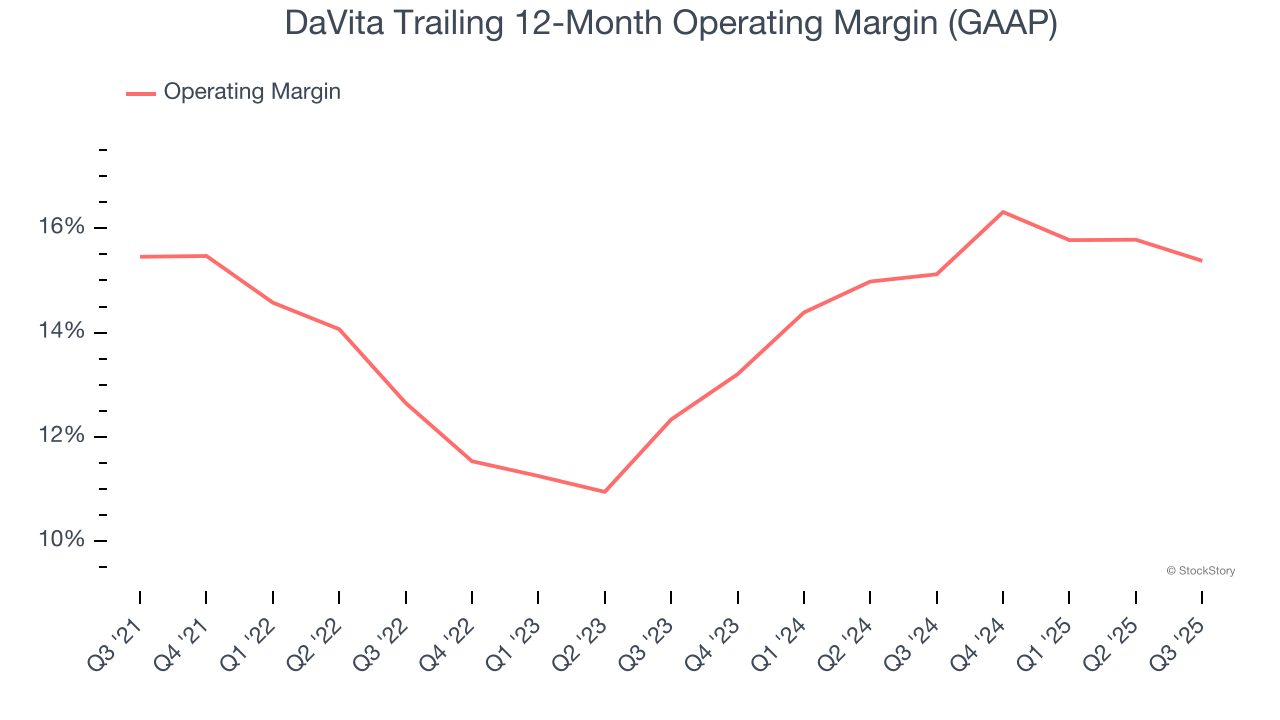
This quarter, DaVita generated an operating margin profit margin of 14.8%, down 1.6 percentage points year on year. This reduction is quite minuscule and indicates the company’s overall cost structure has been relatively stable.
Earnings Per Share
Revenue trends explain a company’s historical growth, but the long-term change in earnings per share (EPS) points to the profitability of that growth – for example, a company could inflate its sales through excessive spending on advertising and promotions.
DaVita’s EPS grew at a decent 5.4% compounded annual growth rate over the last five years, higher than its 2.9% annualized revenue growth. However, this alone doesn’t tell us much about its business quality because its operating margin didn’t improve.
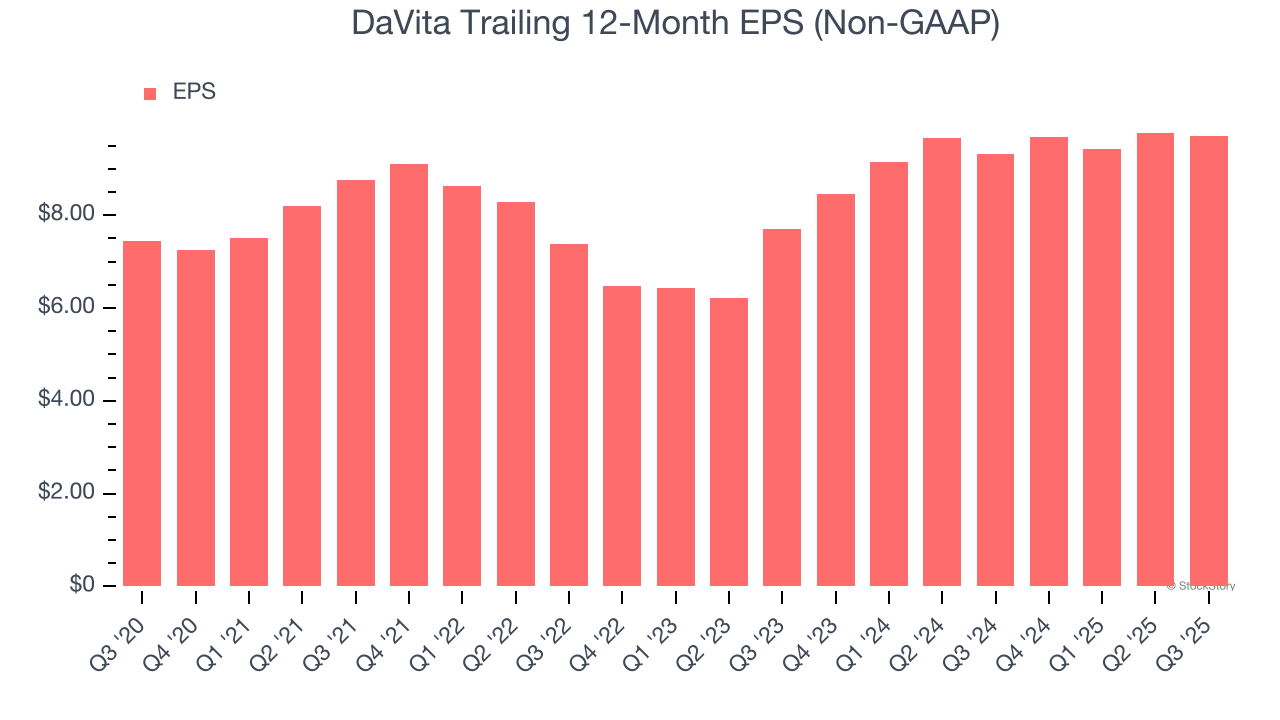
Diving into the nuances of DaVita’s earnings can give us a better understanding of its performance. A five-year view shows that DaVita has repurchased its stock, shrinking its share count by 40.5%. This tells us its EPS outperformed its revenue not because of increased operational efficiency but financial engineering, as buybacks boost per share earnings. 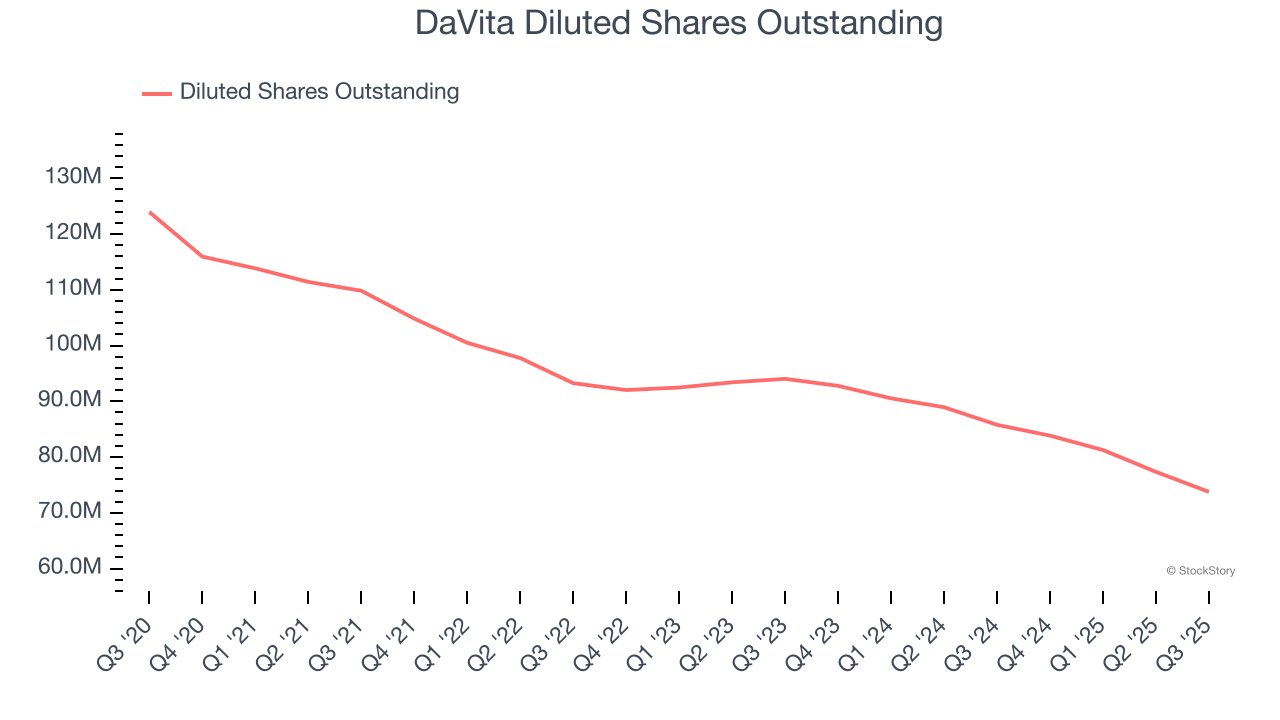
In Q3, DaVita reported adjusted EPS of $2.51, down from $2.59 in the same quarter last year. This print missed analysts’ estimates, but we care more about long-term adjusted EPS growth than short-term movements. Over the next 12 months, Wall Street expects DaVita’s full-year EPS of $9.70 to grow 24.8%.
Key Takeaways from DaVita’s Q3 Results
We struggled to find many positives in these results. Its EPS missed and its revenue was in line with Wall Street’s estimates. Overall, this quarter could have been better. The stock traded down 1.6% to $124.51 immediately after reporting.
DaVita’s latest earnings report disappointed. One quarter doesn’t define a company’s quality, so let’s explore whether the stock is a buy at the current price. The latest quarter does matter, but not nearly as much as longer-term fundamentals and valuation, when deciding if the stock is a buy. We cover that in our actionable full research report which you can read here, it’s free for active Edge members.



